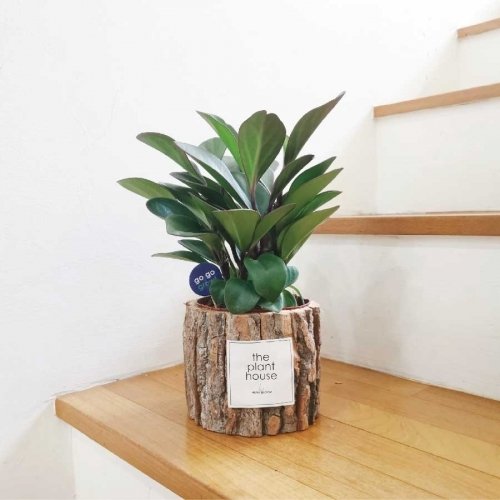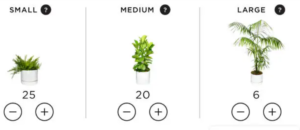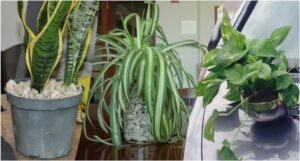We all know that the changes in our lifestyle and modernization have considerably impacted environmental quality. Air pollution has now become a global concern. Many people think that if they’re inside their houses away from the traffic and industrial activities, they are safe from the determinantal health impact of polluted air. However, this is not the case. It has been found that indoor air pollution poses more risk of health issues than outdoor air pollution. It is because we are spending 90% of our time in confined spaces such as our house, office, or school. Now the question here is how we can maintain a healthy indoor environment. A simple answer to this is you need to get air purifying plants. But how many? Let’s find out!
Why buy air purifying pants?
Many houseplants help in getting your indoor environment rid of harmful toxins. These toxins include benzene, carbon dioxide, particulate matter such as dirt or dust, sulfur dioxide, trichloroethylene, and formaldehyde. These toxins are released from different anthropogenic materials which are used in building and insulating homes. Carpets, furniture, paints, varnishes, and kitchen stoves are major contributors in this regard. The indoor air pollutants impart deleterious and even life-threatening health impacts. They have been observed as causative agents of blood cancer and various hepatic diseases. However, the effectiveness of air purifying plants in removing tobacco smoke is still not proven.
Source: (The Guardian)
According to botanists, most of the air purifying plants are natives of the tropical ecosystem. In tropical forests, the plants usually have low direct sunlight requirement as the light is often blocked by the trees’ tall branches. Therefore, their leaves are adapted to perform photosynthesis and produce food with little sunlight. So, they can thrive in indoor environments where there is minimum sunlight availability. Thus, they are not only easy to maintain but also yield an array of environmental and health benefits. Moreover, they also help to enhance the aesthetic vibe of your house, allowing you to feel fresh and energetic all the time.
How many air purifying plants do I need?
When buying air purifying plants, you might be interested to know how many plants will be enough to manage the indoor air quality of your house. Well, it depends on the area of the indoor environment which you want to purify. This has been explained in a report on the impact of air pollution and the role of air-purifying plants by NASA published in 1989. According to the report, if you have an indoor area of 1800 square feet, a total of 15 to 18 plants are enough. You need to plant each plant in a container having a diameter between 6 to 8 inches. Another important factor determining the number of plants is the plant size. If you love small plants, then you need to increase the number of plants to purify the environment. While with larger plants, fewer plants can achieve similar results.
According to NASA’s recommendation, one good-sized plant is enough for an area of 100 square feet. However, recently this recommendation has undergone a change and it is suggested to keep 2 good-sized per 100 square feet. In the light of these recommendations, the simple rule is the more the merrier. However, while keeping indoor plants, there are certain other aspects too which everyone needs to consider. You cannot simply flood your house with plants of different sizes. Therefore, it is important to understand the minimum number of plants providing the necessary benefits to avoid over-crowding.
Are 10 air purifying plants enough for a 500 square feet area?
As NASA recommended 1 plant per 100 square feet so its literal translation for a room of 500 square feet will be 10 plants. So this means if you have to purify your air indoor air, you need to make your house look like a mini botanical garden. There should be some simple mechanism for doing this tiresome calculation job.
Plant Life Balance
To ease this job, there is an App called the “Plant Life Balance” which has been developed by an Australian company. Amid all the confusing guidelines by NASA and complex calculations, this App is a lifesaver. However, if you are living in the USA, you may get a little confused as this App registers area measurements in meters instead of feet. Apart from this, the App is easy to use and visually attractive. This App is developed by incorporating research findings from some relevant research papers which have analyzed the productivity of plants in the indoor environment.
If you are looking for plant count to purify a space of 8 by 8 meters i.e., 64 square meters, enter these dimensions in the app. This will translate into an area of approximately 26.2 x 26.2 feet which makes a total of 686 square feet. Remember when entering the area of your house, consider the total open area of all your house spaces individually and then add them to get the total area. So according to NASA’s recommendations, a total of 13-14 plants are enough for purifying this area. However, the App calculated a total of 51 plants comprising 25 small-sized, 20 medium-sized, and 6 large-sized plants.
Why 51 instead of 13 or 14 plants?
The answer to this question is simple. There are differences in experimental and real-world scenarios that one should address. This App has been developed by reviewing NASA guidelines and studies conducted by the RMIT University. After thorough analysis and panel discussion, the calculation protocols were designed. An esteemed researcher at the University of Melbourne recommended 1 plant for an area of 24 square feet. This is due to the fact that experimental studies including the one by NASA are conducted in confined isolated areas with controlled parameters. The concentration is also carefully regulated. So the reaction of plants to controlled settings is likely to be different from that in our houses.
In the real world, things act quite differently. The use of ventilation and air conditioning systems in our house changes the air composition two times each hour. In addition, the home is a dynamic environment so we cannot expect consistent air quality. So, it seems quite logical to increase the number of plants from that mentioned by NASA. In order to obtain comparable results in the real world, you may need to get more than 1 plant per 100 square feet. So, the number of 51 plants as the App calculated, makes sense.
How to increase the purifying efficiency of indoor plants?
Despite the benefits of air purifying plants, it is difficult to fulfill the contrasting requirements of different plants. There are some ways by which you can enhance the purifying potential of these plants thus allowing you to cut down the number of plants.
Source: (Public Lab)
1- Using activated charcoal
The air purifying potential of the plant has more significance than the number of plants. The research by NASA in 1989 for demonstrating the efficiency of air purifying plants, used activated carbon filter along with the soil. With the use of activated charcoal, the efficiency of the plant increases by 15 folds. In other words, a single plant with activated carbon can remove the same level of VOCs as 15 plants without it.
2- Increasing airflow
If the rate of transpiration of the plant increases, the rate of toxin removal will also improve. For increasing the rate of transpiration, it is important to improve the airflow. The higher the airflow, the faster will be air purification process. The use of hydroculture pebbles in the soil also improves the airflow. By using these, the toxin removal efficiency of the plants increases by 25%.
3- Buying the best quality plants
Increasing the number of plants means, increasing the leaf surface area. The removal of toxin significantly depends on this factor. In order to remove toxins from the roots, plant leaves need to release more moisture. So we can say that the rate of toxin removal is directly proportional to the rate of transpiration. Something the removal efficiency of a plant has nothing to do with its size. An aloe vera plant is equally efficient in improving air quality as a large-sized bamboo palm.
In addition to the leave surface area, there are some plant types that possess a higher potential of purifying the air. This is due to a large number of bacteria and other microbes present in their roots. In contrast to humans, microorganisms thrive in a polluted environment. Various toxins including the VOCs provide the bacteria with nutrients for their growth and survival. So, this is also an important factor determining the air purification potential of indoor plants.
Conclusion
Indoor air purifying plants provide a great opportunity of purifying the indoor air and providing you with pollution-free healthy air to breathe. However, you cannot expect purification of a large area with a single or two plants. In order to get the best results, you need to carefully consider the area and calculate the number of plants required. While calculating the number you should consider the difference between an experimental study and real-world conditions. This may sometimes require you to get a large number of plants which are often difficult to maintain. With the novel Exoplanter, you can solve this issue now. The Exoplanter will look after the watering needs of your plants minimizing all that hassle. Moreover, with the listed techniques, you can increase the efficiency of the air purifying plants, cutting down their number.



